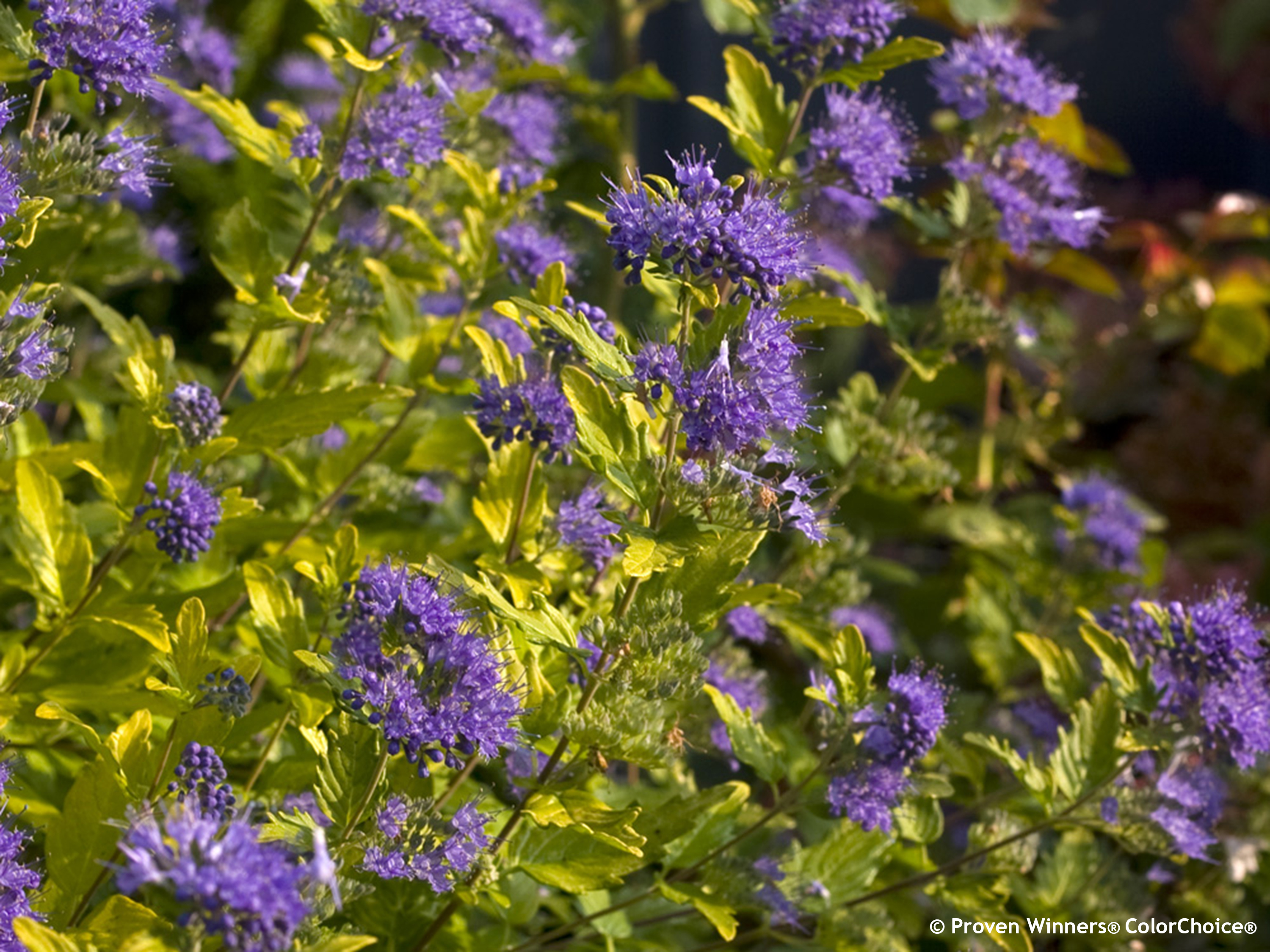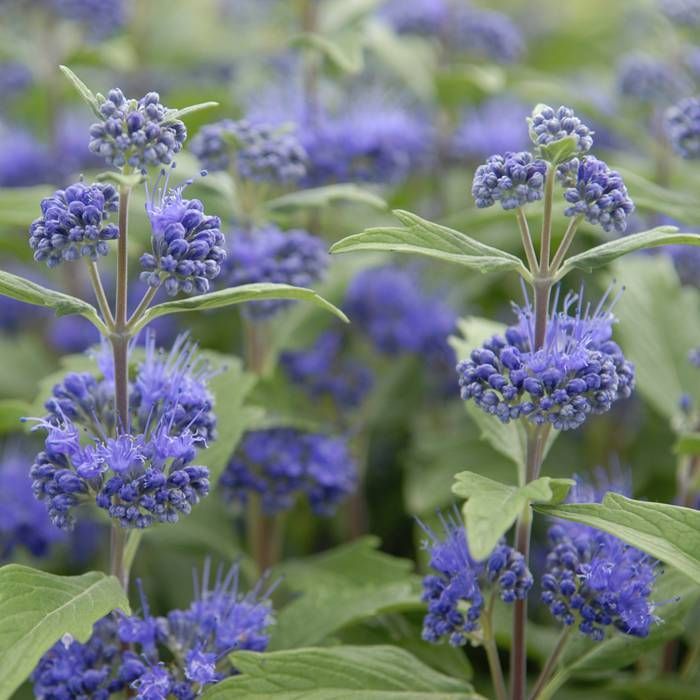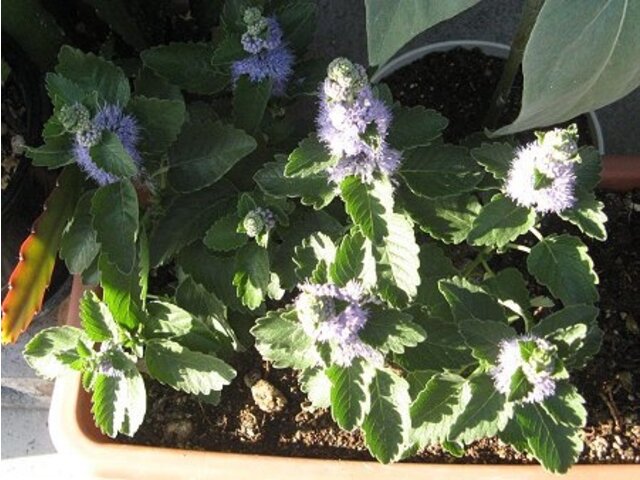How To Grow Caryopteris Incana
Title: How to Grow Caryopteris Incana
Introduction:
Caryopteris Incana, commonly known as bluebeard, is a deciduous shrub that is native to Asia. It is prized for its fragrant, blue flowers that bloom in late summer and early fall. Bluebeard is a relatively easy plant to grow and care for, and it is a popular choice for gardens in USDA hardiness zones 5-9.
Main Content:
Choosing a Location:
Bluebeard prefers full sun, but it can tolerate partial shade. It is important to choose a location that receives at least 6 hours of direct sunlight per day. Bluebeard is also tolerant of a variety of soil types, but it prefers well-drained soil. If you have clay soil, you may need to add sand or compost to improve drainage.
Planting:
Bluebeard can be planted in the spring or fall. When planting, dig a hole that is twice as wide and as deep as the root ball of the plant. Backfill the hole with native soil, and water the plant thoroughly.
Watering:
Bluebeard is a drought-tolerant plant, but it will need regular watering during the first year after planting. Once established, bluebeard can tolerate some periods of drought. However, it is important to water the plant deeply during hot, dry weather.
Fertilizing:
Bluebeard does not need to be fertilized often. A light application of fertilizer in the spring will help the plant to bloom. You can use a balanced fertilizer, such as 10-10-10, or a fertilizer that is specifically formulated for shrubs.
Pruning:
Bluebeard can be pruned in the spring or fall. If you prune in the spring, you will encourage the plant to produce more flowers. To prune, simply remove any dead or diseased branches. You can also trim the plant to shape it.
Overwintering:
Bluebeard is hardy in USDA hardiness zones 5-9. In colder climates, the plant may lose its leaves in the winter. However, the plant will come back in the spring. If you live in a cold climate, you may want to mulch the plant with a layer of leaves or straw to protect the roots from the cold.
Conclusion:
Bluebeard is a beautiful and easy-to-grow shrub that can add color and fragrance to your garden. With proper care, bluebeard will thrive for many years.
Caryopteris incana, also known as bluebeard, is a deciduous shrub native to Asia. It is prized for its blue flowers that bloom in late summer and fall. Caryopteris incana is a relatively low-maintenance plant that is drought-tolerant and deer-resistant. It can be grown in full sun to partial shade and prefers well-drained soil.
If you are interested in learning more about caryopteris incana, please visit Home Gardening. This website has a wealth of information about the plant, including its care requirements, varieties, and pest and disease resistance.
FAQ of caryopteris incana
- What is Caryopteris incana?
Caryopteris incana is a deciduous shrub that is native to Asia. It is known for its blue flowers that bloom in late summer and fall. The plant grows to be about 3-6 feet tall and wide. It is a hardy plant that can tolerate a wide range of climates.
- How to care for Caryopteris incana?
Caryopteris incana is a relatively easy plant to care for. It prefers full sun and well-drained soil. It is drought tolerant once established, but it should be watered regularly during the first year after planting. The plant can be pruned in the spring to shape it or to remove dead or damaged branches.
- How to propagate Caryopteris incana?
Caryopteris incana can be propagated by softwood cuttings in late spring. To do this, take 6-inch segments of new-growth stems and remove the lower pairs of leaves. Dip the ends of the cuttings in rooting hormone and plant them in a well-drained potting mix. Keep the cuttings moist and in a warm, sunny location. They should root in about 4-6 weeks.
- What is the spacing for Caryopteris incana?
Caryopteris incana should be spaced at least 20-32 inches (50-80 cm) apart. This will give the plants enough room to grow and spread.
- What are some pests and diseases that affect Caryopteris incana?
Caryopteris incana is generally a pest- and disease-resistant plant. However, it can be susceptible to aphids, spider mites, and scale insects. These pests can be controlled with insecticidal soap or neem oil. The plant can also be susceptible to powdery mildew, which can be treated with a fungicide.
- How to use Caryopteris incana in landscaping?
Caryopteris incana is a versatile plant that can be used in a variety of landscaping applications. It can be used as a hedge, border plant, or specimen shrub. It can also be planted in containers. The blue flowers of Caryopteris incana make it a popular choice for attracting butterflies and other pollinators to the garden.
Image of caryopteris incana
- Macro shot of a bee pollinating bluebeard (caryopteris incana) flowers.

- A full plant of Caryopteris incana in bloom.

- A close-up of the blue flowers of Caryopteris incana.

- A group of Caryopteris incana plants in a garden.
- A Caryopteris incana plant in a pot on a patio.

- A Caryopteris incana plant in a hedgerow.

- A Caryopteris incana plant in a wildflower meadow.
- A Caryopteris incana plant in a forest clearing.

- A Caryopteris incana plant in a vase on a table.
- A Caryopteris incana plant in a bouquet of flowers.



Post a Comment for "How To Grow Caryopteris Incana"